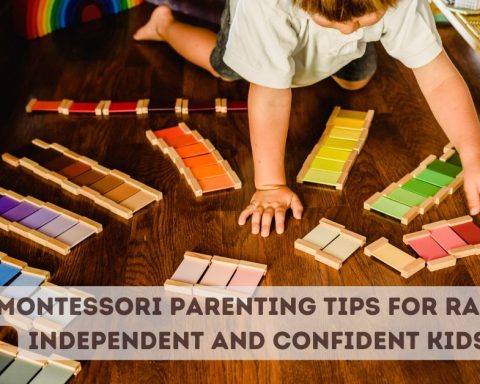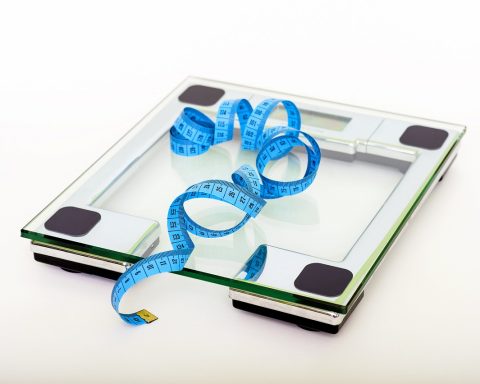Breastmilk is the most comprehensive and beneficial source of nutrition for a baby in the initial period of life. But eventually, the baby needs to transition from breastmilk or formula to solid foods.
This is a very important stage in parenting from the inside out. During this time, babies learn to chew food, use their fingers to pick up food, are introduced to the spoon, discover flavors and textures, and develop food preferences that may impact their whole life. This is also the stage when parents lay the foundation for their children’s eating habits. Parents should encourage their children to eat wholesome and nutritious diets.
Babies who are weaned sometimes continue breastfeeding. In fact, breastfed babies can be nursed until they are one or one and a half years old according to the parenting from the inside out practice. However, some babies lose interest in the breast or bottle earlier, or they may take longer. A baby is considered fully weaned when it stops nursing altogether.
The Best Time to Start Weaning
If weaning is started too early, the baby might get an upset stomach.
One research study rightly observes that “The current UK Department of Health advice is to introduce solid foods to infants at around 6 months of age, when the infant is showing signs of developmental readiness for solid foods. However, many mothers introduce solid foods before this time, and for a wide variety of reasons, some of which may not promote healthy outcomes.”
Likewise, if weaning is delayed and the baby continues to rely solely on milk, the baby may develop anemia or other nutritional deficiencies.
Parenting from the inside out means making healthier and prudent choices for your baby. Six months or twenty-six weeks (give or take one or two months) is the ideal time to start weaning. By this time, a baby’s digestive system is able to cope with solids.
Signs of Readiness for Weaning
Usually, a baby starts showing subtle signs that he or she is ready to wean. Some of them are:
- The baby is able to sit up and hold up his or her head.
- The baby is picking up things and putting them in his or her mouth.
- The baby shows interest in your food.
- The baby is coordinated enough to take food and move it to the mouth when he or she sees it.
- The baby is able to swallow offered food easily.
If the baby shows a few of these signs even before six months, resist the urge to start feeding the baby solids. All of the aforementioned signs, not just one or two, need to be present before weaning can be safely started.
Mother-Led Weaning versus Baby-Led Weaning
It is natural for mothers to take the lead during weaning. They often feel that babies are not independent enough at this stage or that babies may not get enough nourishment otherwise. This method seems to benefit the caregiver too because it saves time and avoids cleaning hassles.
However, mother-led weaning has certain drawbacks. Babies don’t learn to eat on their own and must rely on the mother or a caregiver in order to eat. It also prevents mothers from getting an actual idea of their baby’s appetite, so they may end up overfeeding their baby due to their enthusiasm or motherly concern.
On the other hand, one research study points out how baby-led weaning leads to healthier results: “Weaning style impacts on food preferences and health in early childhood. Our results suggest that infants weaned through the baby-led approach learn to regulate their food intake in a manner, which leads to a lower BMI and a preference for healthy foods like carbohydrates.”
The parenting from the inside out model helps parents decide what works well for everyone. A mix of both approaches is usually beneficial. The baby gets the nutrition he or she needs and gradually learns to become an independent eater. But mother-led weaning needs to be indirect, flexible, patient, and considerate of the baby’s desires in order to be effective.
Read another related article: The Pros and Cons of Baby-Led Weaning versus Parent-Led Weaning: Responsive Parenting
Best Foods for Weaning
Babies can easily digest foods that are light. Mashed and pureed foods are best because they can be swallowed easily. Bananas and other soft-textured fruits, softened rice, soft-boiled eggs, broken wheat, and mashed potatoes are the best introductory solid foods.
Parents should gradually include more food items. Finger foods can be introduced into the baby’s diet as a second stage in order to encourage the baby to eat independently.
There is no reason to rely solely on baby food when a baby starts weaning. Parenting from the inside out recommends that babies eat a wide range of diverse foods, but items should be introduced gradually. Below are some monthly food recommendations.
- Food items for 6 to 8 months: rice, wheat, barley, oats, avocado, applesauce, bananas, pears, potatoes and sweet potatoes, soft-boiled eggs; steamed, pureed, and mashed vegetables like peas, carrots, butternut squash, etc.
- 8 to 12 months (newer items to add): buckwheat, millet, spelt, pulses, pasta, tofu, beans, broccoli, cauliflower, eggplant, zucchini, spinach, mushrooms, cucumber, onions, pumpkin, apples, cantaloupe, seedless watermelon, orange, papaya, fish, lean meats, broth, cheese, etc.
Babies might be allergic to certain food items, or their digestion may not tolerate certain food items well initially. So, observe and adjust the baby’s diet accordingly. Meat should always be well-cooked, and it should be pureed or shredded initially.
What If My Baby Resists Weaning?
Some babies resist weaning and try to stick with milk as long as possible. In this case, parents can delay weaning for a little while longer and then try the following tactics:
- Reduce milk intake. Parents can try skipping one feeding to see if their baby is hungry enough to explore other food options. If the baby wants milk, try distracting the baby for a little while and then offer a solid food. Likewise, if the baby is being breastfed, try cutting the nursing time in half.
- Include the baby in family mealtime. Bring the baby to the dinner table so that he or she gets used to the idea of food and eating. Give the baby a spoon to grab and lick during the meal so that the baby gets used to the idea of self-weaning.
- Nurse for comfort. If the baby asks for the breast or bottle, distract it but don’t deny it altogether. Babies mostly associate the breast or bottle with familiarity and comfort, so they shouldn’t be denied this comfort completely in the first one or two years. It is also a better idea to nurse or bottle-feed a baby rather than feed the baby solids when the baby is ill.
- Keep using milk. Milk is one of the best sources of dietary calcium. Therefore, even if a baby or toddler shows less interest in milk, milk should still be a prominent part of the diet. Use milk in food items like porridge, purees, desserts, shakes, pancakes, mashed potatoes, and French toast. Also, try milk products like cheese and yogurt.
The successful transition from milk to solid food is vital to the baby’s diet, overall health, well-being, and immunity. Healthy eating habits established through parenting from the inside out are sustained in adulthood as well.
References
- Townsend, Ellen, and Nicola J. Pitchford. “Baby Knows Best? The Impact of Weaning Style on Food Preferences and Body Mass Index in Early Childhood in a Case–Controlled Sample.” BMJ Open 2, no. 1 (2012): e000298. Retrieved from http://bmjopen.bmj.com
- Arden, Madelynne A. “Conflicting Influences on UK Mothers’ Decisions to Introduce Solid Foods to Their Infants.” Maternal & Child Nutrition 6, no. 2 (2010): 159–173. doi:10.1111/j.1740-8709.2009.00194.x. Retrieved from https://onlinelibrary.wiley.com








